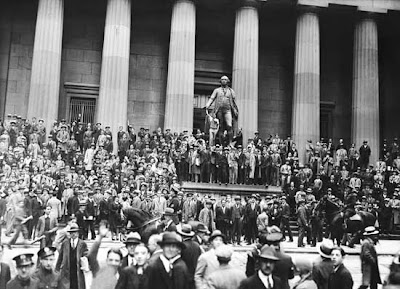
Superb Performance Accuracy Rapidity Totally Anticipation
This fund is built to provide a medium/long-term investment strategy (1-3 years) by picking good companies with strong balance sheets because we don't know when a bull market will come back again.
We need to be Trend Follower Investor.
We will focus our concentration on value stocks on small and medium companies with market cap less than 1 Billion US and avoid volatility stocks like GOOG, AAPL and RIMM. If so; What criteria should we consider ?
Let's me explain some more in details. We will consider on both fundamental and technical approach as below:
Fundamental Criteria (Which stocks to Buy)
- Focus on Alternative energy, Biotech, Finance, Technology and Basic material sector because Obama administrator will support it. Moreover, beating-up tech stocks should come back quickly in middle bull. Also, Financial companies should recovery fast on late bear. Of course, Basic material such as steel, aluminum or lead will gain their ground when economy improve.
- Concentrate on Small-Medium Cap stocks with Market Cap less than 1 billion except Large Cap stocks, allow up to 10 billion.
- Price not too expensive (below 20$) since we have a limited capital.
- Strong balance sheet, low debt unless it’s a normal part of the business (debt/equity less than 40%).
- Strong free cash flow (FCF) after dividends and capital expenditures.
- Companies have High barriers to entry or Doubling their earning in 5 years.
- Undervalued when compare with its industry peers; look at P/E, P/S, P/B and PEG. For example, P/E and P/B is lower than competitors in same industry.
Technical Analysis (When to Buy)
- Followed market trend. If overall market is Uptrend, Stock should make Higher High & Higher Low; conversely Lower High & Lower Low in Downtrend.
- Major Pivot points both Support & Resistance are important.
- If we need to look at a channel, its channel must be formed at least 3 months.
- Fibonacci level at 38.2% and 61.8% are critical level. If Uptrend, draw from lowest to highest. If Downtrend, draw from highest to lowest.








 These 20-Points Fundamental Criteria will screen you value-oriented companies with Low Debt, High Expected Return at Reasonable price or Undervalued. The most score stocks expect to be superior investment opportunity in long run.
These 20-Points Fundamental Criteria will screen you value-oriented companies with Low Debt, High Expected Return at Reasonable price or Undervalued. The most score stocks expect to be superior investment opportunity in long run. 
